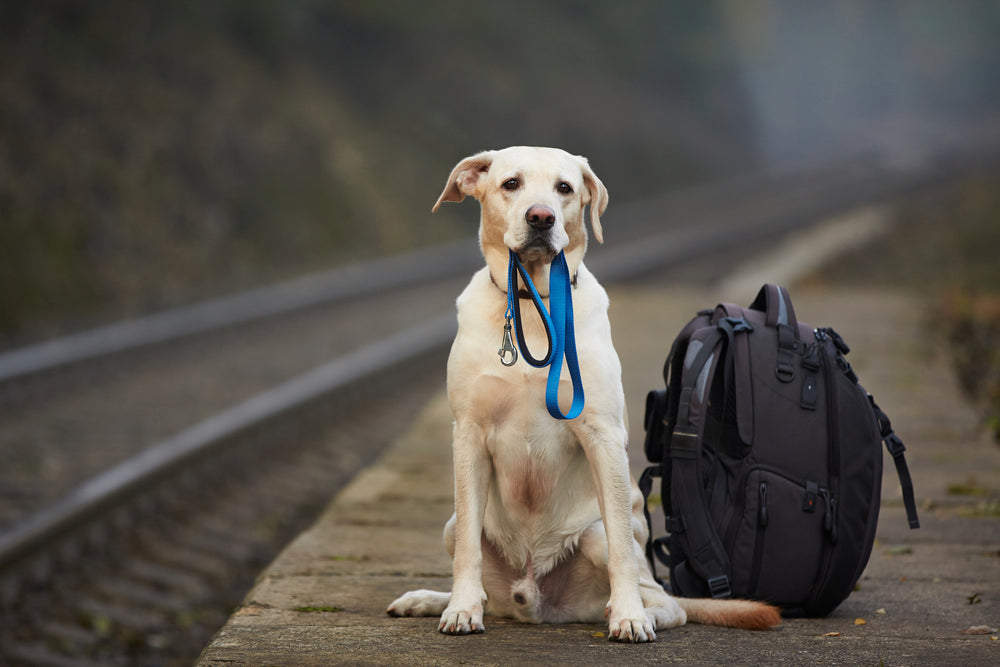Should you microchip your pet? You may have a better chance of reuniting with you furry loved one. Explore what it means to microchip your pet, how to prevent your dog from running away and how to find your pet if he or she runs away!
Every May, we celebrate National Chip Your Pet Month, awareness is raised of the importance of microchipping your pet. When you chip your pet you may have a better chance of having him or her returned if they escape from your home or gets off leash during a walk.
We want to share some information about microchipping your pet as well as what you should do if you find a lost pet.
What Does Microchipping Your Pet Mean?
First, let’s explain what a microchip is. It is a tiny chip, about the size of a grain of rice, that is a permanent identification that is implanted in your dog during a routine veterinarian visit.
It’s painless and once the simple procedure is complete, your dog won’t even notice it’s there. A microchip is not a GPS locator, but the chip will be associated with a website where you will enter your contact information; this is crucial to keep up-to-date in the event your dog gets lost.
- A microchip is an identification for a lifetime. Unlike a collar with an identification tag, your dog can’t “slip out” of his microchip.
- Shelters and veterinary clinics are accustomed to scanning a dog for a chip when one is brought in.
- It’s believed a dog with a microchip is more likely to be reunited with its owner than a dog who isn’t microchipped.
Keep Your Dog from Running Away
- Keep him away from open doors. If your dog suffers from separation anxiety and is otherwise stressed out, he may bolt through an open door -- especially if he sees you’re getting ready to go to work and leave him home alone.
- Keep him on a leash and harness when out of doors.
- If he is in a fenced in yard, make certain the fence has no holes or areas from which your dog could escape.
- Use positive reinforcement training to get your dog to “come” when called.
- Ensure your dog is safe, happy and entertained at home. A dog who is exercised, entertained and otherwise enriched at home may be less likely to run away. Sadly, though there are some dogs who will see an open door as an invitation to run far away.
Finding a Lost Dog: Is He Microchipped?
These are tips we’d like to think that anyone who finds a lost dog would follow as it will help reunite dogs with their pet parents.
- Take the dog to a vet to have him scanned for a microchip.
- Look online to see if anyone in your area has posted that they’ve lost a dog.
- Look around your neighborhood for “lost dog” signs.
- Check the dog for a collar and identification tag and call the contact information on it.
- Go online yourself and post that you’ve found a lost dog, along with the dog’s photo.
- If the dog tries to run away when you approach him, stop chasing him as you could drive him further away or out into traffic. Put down food for the dog and leave him be. Contact your local dog warden and let him know you’ve found a dog who appears to be lost and he or she will come out and try to corral him and find his owner.
- Be aware that if you find a loose dog, chances are he has a loving home and a family who is worrying about him and is frantically searching for him. We urge people to do all they can to reunite a lost dog with his family.
Have you ever lost a dog? Were you reunited? What other tips can you offer pet parents to help keep their anxious dogs safe at home?
CLAWGUARD builds shields that help protect homes from damage caused by dogs and cats. Products include door shields, couch guards, and universal protective tapes that protect commonly scratched areas like window sills, furniture, banisters, weatherstripping and more.
